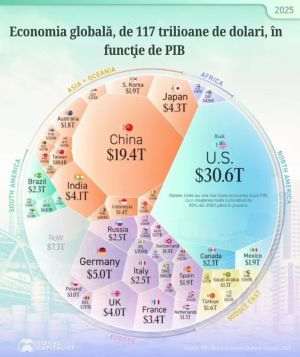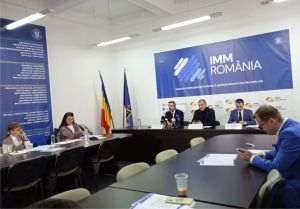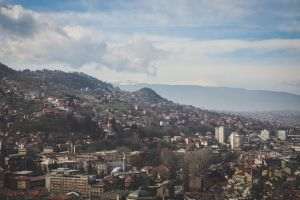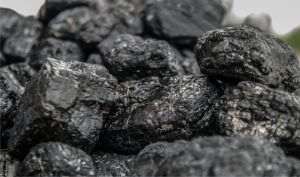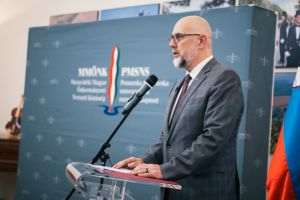
Radu Soviani: Mr. Peiu, how did you come into the mandate at SIDEX more than 20 years ago, and what challenges did you face at that time?
Petrişor Peiu: At that time, I was an advisor to Prime Minister Radu Vasile, and SIDEX was one of the major issues our economy faced, considering that SIDEX's contribution to the GDP was somewhere between 3 and 5%, depending on production levels, which were about double the current levels. However, a problem had arisen that could lead to bankruptcy, involving a firm from London owned by Iranian brothers Alaghband, known in Romania for less than clean dealings - it was called the Balli Group. In Romania, they had General Stănculescu as a partner or president of the Romanian branch and the one who effectively worked and managed it was a certain Dan Drăgoi. This Balli firm did something that buried SIDEX at that time - they convinced SIDEX to create a trading company together, SIDEX International, a company that was supposed to buy raw materials for the plant and sell the produced steel. They relied on the purchasing power and production/export strength of the plant. However, in that company, SIDEX had 40%, and Balli had 60%. Moreover, the company was based in London. This company brought in a revolving financing, a relatively new product in Romania at the time, worth $100 million. Essentially, with the first $100 million, raw materials, especially iron ore, were purchased, steel was produced, sold, money was recovered, and the cycle was repeated. This credit was offered by a banking syndicate composed of 15 European banks, with Credit Suisse First Boston as the leader of the syndicate and BNP Paribas as the deputy leader. However, this company, Sidex International, controlled by Balli, took the $100 million and bought very expensive raw materials, the most expensive or at the highest market price. They brought the raw materials to the plant, resulting in less steel than needed to recover that $100 million, and they even sold that steel at a much lower price than the market price. So, instead of $100 million after the first operation, they were left with $80. A second operation followed, and the banking syndicate began to demand money. Where is the money, what are you doing?
The crisis worsened; banks were calculating penalties, late fees, as it was at that time. The National Bank of Romania (BNR) imposed some foreign exchange collection orders on SIDEX, which obviously were not covered. SIDEX couldn't collect the money, and it couldn't repatriate the currency to the country as required by BNR at the time. At some point, the banking syndicate requested SIDEX to enter insolvency. The government then decided to send a team to London to assess the situation, and I was part of that team.
Radu Soviani: Whom did you meet there?
Petrişor Peiu: We met with the people from the banks. But it was clear that all arrangements were made by Mr. Drăgoi. He picked us up from the airport here in Bucharest, took us to Zurich Airport. Right from the first cafe we entered for a coffee, he started with "look at these expensive candies I bought for you." Now, we were coming from a country that was extremely poor at the time, Switzerland was an extremely wealthy country, of course, and there were famous places like the Sprungli cafe or confectionery. Well, that chocolate cost $10-20, culminating in the fact that he offered us suits at some point.
Radu Soviani: Mr. Drăgoi was offering you suits?
Petrişor Peiu: Yes, one day - theoretically, we had just met that day - we went, saw what it was about, and came to report to the Government. The Cabinet meeting was approaching, and Mr. Radu Sârbu, who was the president of the State Ownership Fund (FPS), presented the report. In the delegation, there was also the person he had appointed to the board, a certain Mr. Moldovan who later went to prison.
Radu Soviani: For actions related to SIDEX.
Petrişor Peiu: Yes, for actions related to SIDEX. And he was telling a different story than what we had seen around the table, saying that an agreement had been reached with the banking syndicate for the Government to pay. I said, "Wait a minute, no one agreed to such a thing!" We had a mission to go and gather information. We couldn't make any decisions. No one could make a decision on behalf of the government. "When did you make this decision?" Because there was a protocol signed by him, Dan Drăgoi, and the leader of the banking syndicate. Well, he says, "while you were in the bathroom." Well, were we all in the bathroom at the same time? Anyway, it was a comic moment. Now, the important ministers realized that with Mr. Moldovan, the matter was lost. So, the Minister of Industry at that time, Radu Berceanu, told Radu Vasile - "why not put the counselor in charge, as he ultimately represents you, the Prime Minister." And that's how I ended up dealing with these issues. Obviously, entering into a long-lasting war with this Balli company.
Radu Soviani: A war in which they deployed all resources. General Stănculescu, with his influence...
Petrişor Peiu: First of all, the media. Secondly, political relationships, and thirdly, manipulating this very difficult situation in their favor. The solution we found was to directly negotiate with the involved banks and find a solution that involved heading towards international arbitration and, in the meantime, to be able to work under normal conditions. Many of those banks even offered commercial financing for the plant, meaning that, as they got to know us better, we de-escalated the situation, and from their perspective, it wasn't bad faith; it was just what they had received as reporting from the Balli company.
Radu Soviani: So, practically, what was decided in Zurich?
Petrişor Peiu: They had established a program where the Government would recapitalize SIDEX, and from that money, the debts to the banking syndicate would be paid, obviously still using the SIDEX International vehicle, which was not done.
Radu Soviani: Just to make sure I understand, out of 100 million in cash, it became 80, 60...
Petrişor Peiu: I don't remember if it was exactly 80, but it was decreasing by about a quarter, a fifth.
Radu Soviani: But how was it possible to sell at a loss? Who benefited?
Petrişor Peiu: Well, it was very simple. Each large economic unit is designed for a certain type of raw material. SIDEX worked exceptionally well with two types of iron ore: Brazil, CVRD, a major producer, the company Vale do Rio Doce, and Venezuela. These were two ores that worked exceptionally well, meaning they yielded very good steel charges. SIDEX had relatively long-term contracts, with certain formulas, with CVRD, which was a major producer, and let's say the prices were at a certain level because they paid based on the percentage of iron in the ore. Brazil and Venezuela had high percentages of iron - 68%-80% - so we had some prices (around 6-7-8 dollars per ton, something like that). They went and bought the same ore for about 10 dollars per ton.
Radu Soviani: So, more expensive than what SIDEX would directly buy it for.
Petrişor Peiu: More than what SIDEX was paying and more than the market price, as the market was not very extensive, there are not many such plants in Europe. For example, I knew the transport cost, the freight as well; I saw that there were significant differences compared to what SIDEX was buying or what other companies supplying SIDEX were bringing. There were substantial differences. At that time, I even created a table presented to the Government; there were differences of 30-50%.
Radu Soviani: Where did the difference go? Where could it go?
Petrişor Peiu: The intermediary company was SIDEX International. That's where it went. Another trick, so to speak, was that instead of buying ore from Venezuela or Brazil, they bought ore from India, which was not a problem, only it was ore with lower iron content. Since the price was proportional to the iron content in the ore, it cost the same as what we used to pay for Brazil, but these ores were much poorer in iron. Well, many companies did such things with Galaţi, but they did them methodically. Others would do three good things and then one such mischief. They only did such things. The same when they were sold. SIDEX produced semifinished products, very good, excellent quality, but semifinished. These had a relatively standard price everywhere, meaning everyone knew how much they cost. What did they do? Hot-rolled strip, cold-rolled strip, and naval plate. Thick plate. All of these had fairly well-known prices with small variations in major markets. Where did we sell? In Italy, Germany, Turkey. Prices were known for a long time, and everyone who exported from Galaţi exported to the same markets, so we knew the prices. Well, their prices were much lower. So, what we exported for $170 per ton through others or directly, as SIDEX also had a trading company called SIDEX Trading. So, SIDEX itself exported for $170 per ton, the same merchandise, and SIDEX International sold it for $150.
Radu Soviani: Who benefited from this discount?
Petrişor Peiu: I don't know what was behind the operation.
Radu Soviani: Whoever bought it for $150 might sell it further for $170.
Petrişor Peiu: Exactly, and then they shared the money, whoever decided, as is the practice. For example, I found in the documents of a trader in Germany, who sold what he bought for $150 further for $170, a contract signed on the same day. The trading company fired that individual for doing such a thing because they later found a way to remove this difference from the company's accounting. So, in short, it was a scam.
Radu Soviani: Fleecing.
Petrişor Peiu: Many were engaged in fleecing, that was the big challenge - to stop this barter. All companies working with the plant engaged in barter, and that's how we ended up in this unfortunate situation that I see persists today, but no one did it systematically and on such a large scale as Balli.
Radu Soviani: That's why you call it a scam.
Petrişor Peiu: That's why I call it a scam. Plus, I found in the documents, when we were in Zurich, something that was not known in Romania, not even at the State Property Fund. There was an annex to this contract between SIDEX and SIDEX International, called the famous "side letter," as it was written in English at the time, which was another quite strange thing in Romania at that time. Even large companies doing business with Romania and importing, for example, pitch or coal for the Thermal Power Plant, which was state-owned at the time, all made contracts in Romanian. Large German companies made contracts in Romanian. Gazprom, I remember, sold gas to SIDEX through the Verostal company, a large German company, and the contract was in Romanian, made between them. Meaning much larger companies.
Radu Soviani: Here you found the contract behind the contract.
Petrişor Peiu: The contract, the annex, this "side letter," a kind of addendum that obliged SIDEX to accept the prices offered by SIDEX International, meaning it didn't even have the right to negotiate and accept, especially what was against the law at the time, to sell at a loss. So, we had production costs of $160 or $170 per ton for a certain grade, and that "side letter," that annex, an additional act but secret, that's why they called it a "side letter," imposed that we sell at a price below the cost price.
Radu Soviani: Was the "side letter" signed by Balli?
Petrişor Peiu: By Balli, Dan Drăgoi, I think, was the General Manager at Balli, and at SIDEX, there was a gentleman named Nicolae, may God rest his soul, who also died, and he was also the mayor of Galaţi later on, Mr. Nicolae, not speaking English.
Radu Soviani: So, this was the contract behind the contract, to sell at a loss. How did the Romanian state end up with the debt assumed through the privatization contract?
Petrişor Peiu: Well, when the negotiations were made with Mittal, who was the buyer, Mittal Steel, actually an offshore company from the British Virgin Islands, LNM Holdings. And at the base of all the great pyramids in Romania, we stand on very slippery ground. When I became the Chairman of the Board, there was a three-person appointment; the Secretary-General of the Government appointed the head of the Government's legal office, and the Minister of Industry appointed the director general from the ministry, Mr. Petru Ianc, who was an authority in the industrial and metallurgical world. We consulted each other and decided to be somewhat more professional. So, we hired, first of all, a gentleman who was an expert in international banking techniques, one of the few who had negotiated financing contracts in Romania for very large amounts. The first contract was made in Slatina because the idea was to eliminate barter, take credit ourselves, buy raw materials, produce steel, and sell it ourselves. To put an end to the parasites. And we also hired a law firm to assist us in these matters, so that we wouldn't get into trouble like that "side letter" or that secret act, let's call it a secret contract, and avoid legal complications. We hired a law firm; there weren't many in Romania at that time, maybe 2-3, which sent us their best people, and they worked excellently. The problem was that when Mittal, the buyer, appeared, the two young lawyers separated from that firm and started their own law firm, and that firm became Mittal's legal consultant. So, in a way, the law was respected in its letter because the firm that had provided legal assistance to SIDEX was no longer involved for other clients. But exactly the people who had worked there were. You can imagine that Mittal knew very well.
Petrişor Peiu: Well, he was advised on who to pick.
Radu Soviani: I remember Radu Sârbu; he said that the privatization of SIDEX would be the crown jewel.
Petrişor Peiu: That was after Radu Sârbu; it was Mr. Muşetescu (Note: Ovidiu Muşetescu, former Minister of Privatization, president of APAPS at that time). But it's about the personnel; I don't know if Muşetescu necessarily had a plan; I don't think so, but it was about the quality of the personnel. They were negotiating. Not SIDEX. The lawyers knew everything inside out, the weaknesses and strengths. Those at the State Property Fund were as they were, and anyway, they didn't know anything because they didn't read any files. I remember having a great frustration back when I worked for Galaţi because no one read anything. No files. Well, I've seen that in many companies. And it reached the point where they didn't pay a penny for the plant, Mittal. But instead of taking over both the assets and liabilities, the Romanian state covered both the collective layoffs, meaning paying severance, and many other issues. Mittal did not accept both the assets and liabilities and said, "Let this go to arbitration, and if you lose, you pay, the Romanian state."
Radu Soviani: How much money are we talking about?
Petrişor Peiu: $52 million.
Radu Soviani: For the amounts the banking consortium was supposed to collect?
Petrişor Peiu: No, for the amounts SIDEX International was requesting. Not the banking consortium; we had settled with them.
Radu Soviani: An agreement had been reached with the banking consortium, and SIDEX International ended up asking for $52 million for what?
Petrişor Peiu: Claiming that this loss was theirs. Well, they didn't prove it, but that was the theory.
Radu Soviani: From independent information, we understood, and maybe you can confirm or deny it, that a part of the ore that SIDEX International supposedly paid for was never found.
Petrişor Peiu: Well, that's a lot of ore. Do you think the ore listed in the state's reserves is still there? Or the steel quantities?
Radu Soviani: So, on what basis? Because no one bothered to see why SIDEX International wanted $52 million...
Petrişor Peiu: Well, if the Romanian state had truly defended itself, they would have certainly done these things.
Radu Soviani: Did the Romanian state fail to defend itself?
Petrişor Peiu: I don't think they defended themselves as they should have. Because certain things would have been very easy to prove. Because I personally went, and I think others did too, with numerous files to the State Property Fund over time, to the Ministry of Finance, to BCR, which helped us a lot, in which all these matters were documented, copies of contracts, tables, where it was very clear.
Radu Soviani: So, essentially, no one genuinely verified why SIDEX International was asking for $52 million?
Petrişor Peiu: I don't think the defense of the Romanian state was grounded on all these issues, which were well-documented, all these situations.
Radu Soviani: Arbitration comes into play.
Petrişor Peiu: It takes time, it ends at some point, and the Romanian state loses. Incidentally, the Romanian state is represented in international arbitrations by the Ministry of Finance. You know, everything with a patrimonial character is handled by the Ministry of Finance. A Secretary of State in the Ministry of Finance-son of that Mr. Drăgoi, Mr. Bogdan Drăgoi. Who also dealt with international aspects managed by the Ministry of Finance, including this arbitration. They could have at least abstained, I think. Let another Secretary of State handle it. The fact is that the decision came exactly when he was the Secretary of State, and I believe he was a minister for a relatively short period.
Radu Soviani: 2012, 78 days in the Ungureanu Government.
Petrişor Peiu: That's when the sum was paid.
Radu Soviani: So, the process in which the defense was conducted under the mandate of Secretary of State Bogdan Drăgoi...
Petrişor Peiu: It was the conclusion.
Radu Soviani: ...and it was paid in those 78 days.
Petrişor Peiu: The idea is that, just as the decision from that arbitration was given, it wasn't very clear; the debt was there, but it wasn't very clear that Romania had to pay the debt. So, a civil action should have been filed for that, which no one did.
Radu Soviani: Which should have been done by the Ministry of Finance?
Petrişor Peiu: No, it should have been done by SIDEX International, Balli. Meanwhile, these three brothers were arrested, the eldest brother, Vahid, was arrested for other scams in the UK, or the eldest brother who was actually the president of the company, Vahid Alaghband. That's how Romania paid the $52 million, which I think, in the end, were around 70. Because they paid some penalties that, again, weren't covered.
Radu Soviani: But did the money effectively go to the Balli shareholders? Or to the SIDEX International shareholders?
Petrişor Peiu: Well, it effectively went to SIDEX International. At SIDEX International, the 60% shareholder, as I mentioned, was Balli.
Radu Soviani: In practice, you mentioned a little earlier that SIDEX was given quasi-gratis. The Romanian state actually paid to take over SIDEX, through at least $52 million, up to 70?
Petrişor Peiu: Who would they pay?
Radu Soviani: It paid to SIDEX International.
Petrişor Peiu: Ah, it paid to Mittal as well. That's for sure. Before actually taking over the shares of the plant, Mittal made a pre-contract, and for six months, they ran the plant under a form called an observer. Essentially, any decision by the directors had to be approved by the Indian directors. And what did they do? Great engineering; they brought their own leeches. They also established an import-export company called Pacific-Atlantic-Dubai-Mittal, and they handled the import and export, making significant profits there.
Radu Soviani: On the same recipe.
Petrişor Peiu: On the same recipe.
Radu Soviani: In practice, when you became President of SIDEX, who opposed you mainly?
Petrişor Peiu: The opposition, how should I say it, no one had any opposition. It was the decision of the prime minister; the appointment came from the State Ownership Fund (FPS). There was a sort of resistance, a silent struggle fought through the media by Balli.
Radu Soviani: The pressures you felt... Ultimately, they managed to remove you?
Petrişor Peiu: Yes, of course! But I don't know if it was because of their pressures, as much as it was due to the fact that the Radu Vasile government fell. Radu Vasile left, and the team around Cotroceni, around Constantinescu, aimed to remove everyone close to Radu Vasile from any position. Probably the stars aligned, and Dan Drăgoi consulted, befriended Dorin Marian, who executed this policy of decapitating Radu Vasile's close associates. I think that's how it was. Moreover, someone conveyed a message to me in that regard, that if I wanted to stay there, it would cost a certain amount, and we needed to continue working for this new team with Dorin Marian. But it was conveyed by an intermediary.
Radu Soviani: With Dorin Marian and the old ones...
Petrişor Peiu: Yes, but an intermediary told me. I don't have certainty that Dorin Marian said that.
Radu Soviani: We find Dorin Marian in both the Petromidia and SIDEX cases. But how do you explain the power of Victor Stănculescu/Dan Drăgoi?
Petrişor Peiu: I don't think Stănculescu was still involved; I haven't seen him personally. He was quite old. He had a significant legal problem because the Romanian state was judging him for what happened during the revolution in Timişoara, if you remember. He was convicted in the early 2000s, his wife committed suicide, so I haven't seen him.
Radu Soviani: Had Dan Drăgoi practically taken over?
Petrişor Peiu: He was the one who appeared all the time. Discussions were held with him; he was the one acting.
Radu Soviani: How do you explain his power? Even the courage to propose buying you suits, a bribe, so to speak?
Petrişor Peiu: Well, not just to me. Okay, we can laugh now. Sir, a suit...
Radu Soviani: Laugh at Dan Drăgoi?
Petrişor Peiu: And for us, at the level we were. I mean, for someone to propose buying you a suit... The salary for the President of the Board of Directors at SIDEX was 600 lei, and the exchange rate between the leu and the dollar was almost the same...
Radu Soviani: Where did Dan Drăgoi's power come from?
Petrişor Peiu: Many people said he might have been somehow connected to the former Securitate. I don't know. He was an intelligent, civilized, decent guy- not a primitive person or someone disconnected from today's businessmen. He was more stylish, you could say. However, the greed of those in leadership positions was probably quite substantial. From what I know and sense, I can tell you, I believe that many top Romanian politicians at the time were bought for relatively small amounts. Even if you recall, there was a scandal with the president of CEC, Camenco Petrovici, who ended up being sentenced for a few thousand dollars in the case involving Vîntu.
Radu Soviani: And the CEC guarantor.
Petrişor Peiu: But, how can I put it, for peanuts. It was pretty much the same for many others. I saw some horrifying things; I was ashamed to come from such a country. Someone from that same company, a partner to SIDEX, another leech, because everyone was doing similar things with more or less decency, told me during a meal: "Sir, I beg you, please don't disclose your salary because everyone will buy you cheap. That's how we understand it. When we ask, say your salary is $16,000."
Radu Soviani: An interesting angle, but how do you explain that certain groups, certain companies, in this case Dan Drăgoi, who manages to have the debt paid off when his son is the finance minister, manages to enter what can be called strategic companies? SIDEX, on one hand, COMVEX on the other, both belonging to the Drăgoi family?
Petrişor Peiu: COMVEX was before SIDEX. A privatization was done. So, one of the great friends of the Balli company was Sorin Dimitriu, who was the Chairman of the Board of Directors of the State Ownership Fund, and he was the privatization minister. He did the deal with COMVEX, which was an incredible thing that people may not remember now: a state privatizing, giving to a foreign company the only ore terminal in the Black Sea, the only one, the Russians didn't even have it at Novorossiysk yet, of large capacity, that was COMVEX, and they gave it to a company that had no connection to the industry, to logistics. Balli was a company with three offices in London.
Radu Soviani: I found Dan Drăgoi in SIDEX, I found him in COMVEX, and at some point, I found him in the company that wanted to "revitalize" ARO.
Petrişor Peiu: Wait, let me tell you. They had BBG Alum Tulcea, which was the place where the raw material for the plant in Slatina, for ALRO, was produced.
Radu Soviani: They wanted ALRO at some point.
Petrişor Peiu: They wanted ALRO too. Exactly. Their first major failure was not getting ALRO; they had a kind of pre-emption right there. And the second major failure was not getting SIDEX. In fact, the purpose of that story I told you at the beginning about this revolving financing contract was to bring SIDEX into a situation where it could be bought, meaning they would buy that debt at a very low price.
Radu Soviani: And buy the plant with SIDEX's money in the end?
Petrişor Peiu: Exactly. Which, in fact, Mittal did.
Radu Soviani: In practice, we are talking about the component of strategic privatizations: SIDEX, COMVEX...
Petrişor Peiu: It's a major failure of the Romanian state and all its institutions.
Radu Soviani: The other component is mass privatization. After 30 years in which Romanians were distributed, through SIFs, 30% of the national wealth, we now find SIFs1, SIF4...
Petrişor Peiu: They were FPPs at the beginning. Private Property Funds. And now they have transformed into SIFs.
Radu Soviani: And now we find Bogdan Drăgoi who controls three SIFs.
Petrişor Peiu: His son. I didn't know about three; I knew about two. If people think these are coincidences, that's life. It seems we believe that in Romania, that these are coincidences.
Radu Soviani: How do you see that, still, after 30 years, three SIFs end up being controlled by some spoiled individuals?
Petrişor Peiu: The political class, and not just the political class, but also those who have influence in those SIFs, are rather simple people and easy to fool. I also believe they are quite "cheap," as the English say. And Bogdan Drăgoi is much smarter and more civilized than his father, who was already a "light" among those in Romania at that time. So they capitalized on these personal abilities in the context of above-average intelligence and took advantage of the naivety and simplicity of the decision-makers in Romania.
Radu Soviani: I know you are also a consultant, and I would like to ask if you have ever found interest from foreign entities to invest in SIFs?
Petrişor Peiu: Not in SIFs. There was great interest, remember, when investment funds were pressing to lower the threshold for calling the General Shareholders' Meeting and amending the constitutive acts so you could buy. That was the elimination of the ownership threshold. However, we had a client, a major bank, which was interested in buying the management company from SIF4, SIF Muntenia - Muntenia Invest. They conducted due diligence and stopped. It didn't meet the criteria, let's say, not even the ethical ones. Not to mention the rest.
Radu Soviani: Meanwhile, it satisfied SIF1, which bought SAI Muntenia Invest.
Petrişor Peiu: Only such a strange entity, as these controlled SIFs are, we all know, by a few barons, could have entered such a risky business.
Radu Soviani: I would like to ask you, now, after 32 years, how do you think the privatization process in Romania worked? Both in terms of strategic and mass privatization... Who are the real beneficiaries?
Petrişor Peiu: It worked chaotically. The strategic privatization component was chaotic and without any program, vision, or strategy. It happened by chance. The result is visible: among the considered strategic companies privatized, apart from ALRO Slatina, there are a few - the pipe factory in Zalău, for example - that have functioned quite well, and a few logistics and infrastructure companies privatized, but not many. It was, overall, a major failure - many companies closed, especially in the agri-food sector. You know it's a disaster. Regarding mass privatization, here, too, I see major failures. The largest construction company in Romania disappeared - CCCF - went bankrupt. The largest Romanian company that could do major infrastructure works disappeared. For example, they did the last major work in Romania, the bridges at Feteşti, in 1987. And they vanished with mass privatization. Another victim of mass privatization, also in this infrastructure area, Hidroconstrucţia, which is in insolvency, so in a difficult situation when it should have been probably the largest construction company in Romania. So there are many such examples of large companies that have disappeared. We also have examples, similarly, of small and medium-sized companies, companies in the agri-food sector, which all disappeared. Many trading companies have turned into "renters," no longer engaging in activities in their own name. We don't have great successes. We have a great success that can be mentioned, but it doesn't have such a spectacular turnover, it's about the aircraft factory in Bacău, Aerostar, which is doing exceptionally well. I believe it was also certified as a supplier for Lockheed Martin, now also for the F-16. We have a few more examples like this, but extremely few. The big companies have pretty much crumbled. All those county construction trusts, if you remember, with archives... the archives disappeared. They had teams of engineers who could do complex projects. Because now, if we have a project of 100 million euros, a foreign company must come, as there is no one here. All of these have disappeared. This is the demonstration of the failure of mass privatization.
Radu Soviani: On the other hand, we have seven million shareholders, still in SIFs, dormant.
Petrişor Peiu: They are inactive.
Radu Soviani: Who has an interest in keeping them like that?
Petrişor Peiu: Well, the leaders of the SIFs. They gather, coordinate, 10-15-20% of the shares, and manage to decide, you see, for colossal sums. Well, the SIFs haven't gone spectacularly either. We keep saying that one of the major failures in Romania is tourism. Well, an important player in Romania is one of the SIFs. That's how they received it. They also received significant shares in banks.
Radu Soviani: They had shares in BCR, Bancorex, Banca Agricolă...
Petrişor Peiu: They did nothing. They wasted that money, sold it for next to nothing. What can I say? They don't have performance. Or maybe the presidents and leaders of the SIFs have great individual performances, but the SIFs themselves are not performers. I mean, look at their evolution...
Radu Soviani: I was looking, a SIF1 leader, Bogdan Drăgoi, cumulatively earns over one million euros annually. Either directly or in shares.
Petrişor Peiu: Still, in a decent economy, it's not an amount that should scare us. Annually. And I don't think it should scare us because, as I said, he's not stupid, he's educated. That's not the problem. The problem is the totally unethical way, if you will, in which this Balli company, on which the Drăgoi family's wealth is built, acted against the Romanian state.
Dan Drăgoi wasn't a great experience. He was a civilized man. He didn't spit on you, swear at you, or beat you; he spoke nicely. Only we were on hostile terms because he represented a company that intensely parasitized SIDEX.
Radu Soviani: In the end, which position won? Yours or Dan Drăgoi's?
Petrişor Peiu: Both sides lost.
Radu Soviani: What was their loss?
Petrişor Peiu: Their goal was to take over SIDEX. To be the buyers. They failed to do that. And Mittal didn't keep them afterwards as suppliers or, I don't know, buyers. So they didn't have great success. But they had much financial success. They sold, for example, COMVEX for a very large sum, about 13 times more than what they bought it for.
Radu Soviani: Thank you!

